What would it look like if Frank Gehry (ANA 1988, NA 1994) built a prison? That question is at the heart of Frank Gehry: Building Justice, a 2018 documentary directed by Ultan Guilfoyle that made its Los Angeles premiere at the Architecture & Design Film Festival (ADFF) last month. Guilfoyle has worked with Gehry in the past—he produced Sydney Pollack’s Sketches of Frank Gehry (2006) for American Masters—but he said in a post-screening discussion that the topic of this film came as a surprise, even to him. He explained, “I never thought I would be going into prisons with Frank Gehry, but it was a great thing to do.”
Frank Gehry’s name is in the film’s title, but this time around, the spotlight isn’t on him or his work, although the famed architect commands attention whenever he’s on screen. Building Justice focuses on the young architects enrolled in concurrent master studios led by Gehry at SCI-Arc and the Yale School of Architecture. Gehry, along with investor George Soros and his philanthropic Open Society Foundations, wanted to explore redesigning prisons for a future time with much lower incarceration in the United States.
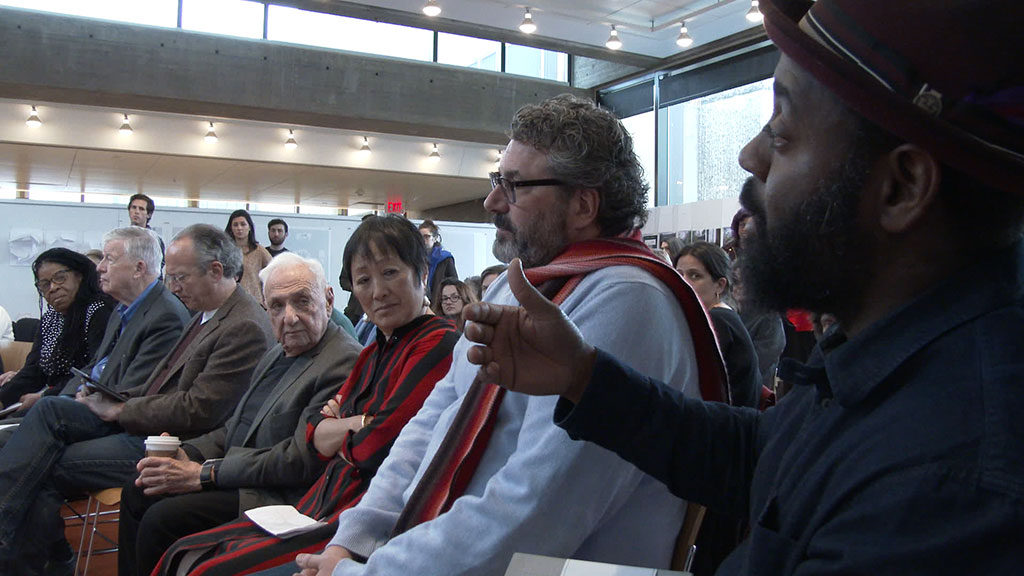
Instead of revealing a model of what a Gehry-designed prison might look like, the film follows the students as they pursue an academic-year-long investigation into prison design. Under the guidance of a Gehry-led team of experts that included Tod Williams (NA 2010) and Billie Tsien (NA 2010), the students visit prisons in the United States and Europe, meet with former prisoners to hear about their experiences, and attempt to address flaws in the American system by designing better, more humane alternatives.
Students meet with parolees from A New Way of Life Reentry Project, including the organization’s founder, Susan Burton, whose experiences with incarceration inspired her to become an activist. She started A New Way of Life to help women get back on their feet after being released from prison. In the film, the formerly incarcerated women in her program share disturbing memories of their experiences behind bars. Waking up to the pounding, machine-gun sounds of hundreds of steel cell doors slamming open. Struggling to breathe on hot summer days with only one small fan for a cement cell that holds eight women. Attempting to stay sane while being restricted to a SHU (Special Housing Unit, a.k.a. solitary confinement) for long stretches of time.
Ingrid Archie lived at A New Way of Life when she left prison and later began working with the organization to help other women. She saw Frank Gehry: Building Justice for the first time at the ADFF’s Los Angeles screening and participated in a discussion with the director following the film. Archie recalled, “When I first stepped into a prison, I cried, and I thought I was never going to make it out. It wasn’t because I saw a guard. It was because I saw the barbed wire around the gate. I was like, ‘I’m in a cage, and I’m never going to make it out of here.’”
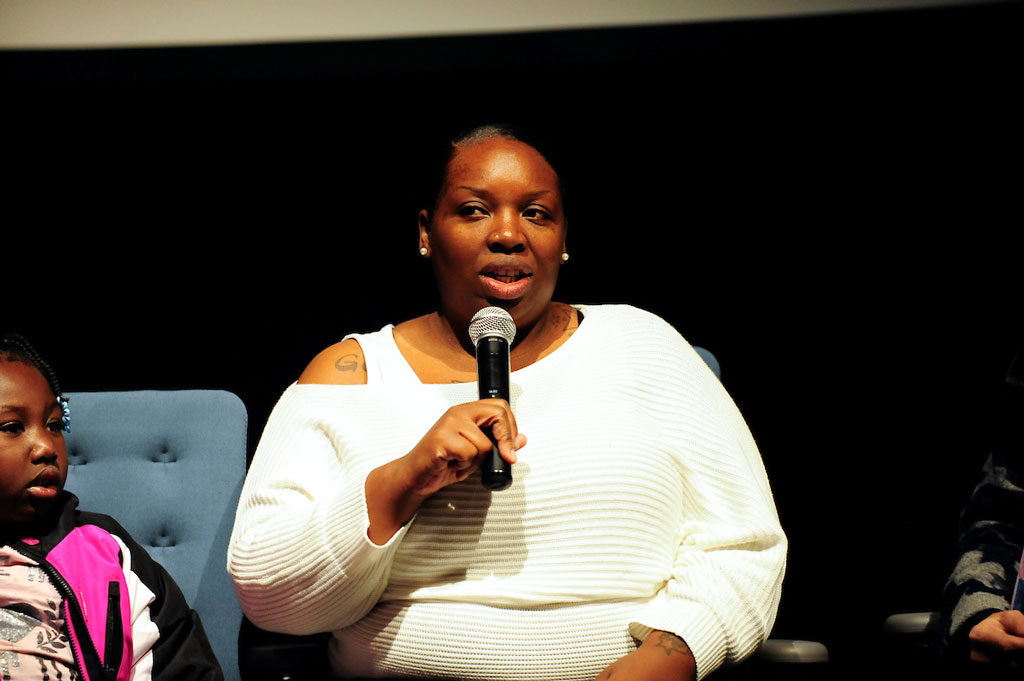
When she met the students at SCI-Arc and the Yale School of Architecture, she could tell their backgrounds were very different from her own, and wondered, “Will they get it?” After seeing their prison designs, she realized that the students all saw incarcerated people as human beings. She remarked, “The way they took on the project—they had trees, basketball courts, services, and childcare—it was like, ‘Wow, they really get it.’”
In addition to class time with Gehry and his team, the students worked with Impact Justice, a social justice nonprofit based in the United States. They visited Norway and saw prisons that look nothing like ones in our country. As an American watching the film, I thought the Norwegian prisons looked more like adult summer camps than places of incarceration. Prisoners wear their own clothes, and have access to sunny kitchens, classrooms, musical instruments, and expansive outdoor spaces. There are high walls around the perimeter, but no cells or bars.
Director Ultan Guilfoyle summed up the major difference during the discussion: American prisons are built for punishment. He said, “In the American system, there’s a level of punishment at every stage of incarceration, from the moment you go in, until the moment you leave. There’s no understanding that the removal of freedom is in itself the punishment. In Norway, for example, the understanding is that it’s a major, major sanction to have one’s freedom removed.”
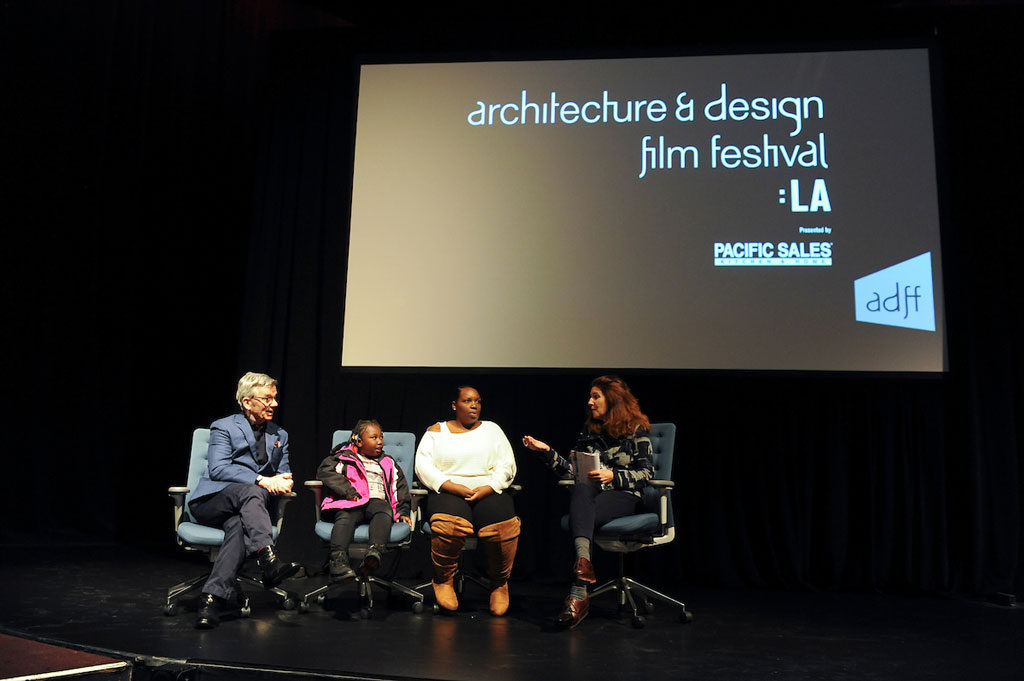
As a former prisoner, Archie told the screening audience, “We’re conditioned to think that we’re supposed to be punished, and so, when we see that it’s not happening in other countries, we’re like, ‘Well, what did they do?’” Even when the Norwegian prisoners had committed violent crimes, their country’s system treated them with far more respect, focusing on helping them improve their lives so they don’t return to prison. The results speak for themselves. In countries like Norway, Archie said, “The recidivism rate is low. The recidivism rate in America is 79% with these cages.”
Matthew Kabala, one of the students who participated in the master studios seen in the film was in the audience for the LA premiere. During the discussion, Guilfoyle asked him to share his perspective on the project. Kabala said, “It was an incredible experience, totally unforgettable.” Acknowledging Gehry’s age, he added, “It might have been Frank’s last studio, and if so, he went out on a high note.”
The real star of Frank Gehry: Building Justice isn’t the titular architect, but the work he inspired these students to create. Watching the film, I wondered if that’s why he chose to put his name on it. As the most famous architect alive today, Gehry has the ability to draw the public’s attention to almost any issue. He knew he would never be commissioned to design a prison, but by choosing to be involved in the project, he shone the spotlight of his celebrity on this important human rights issue.
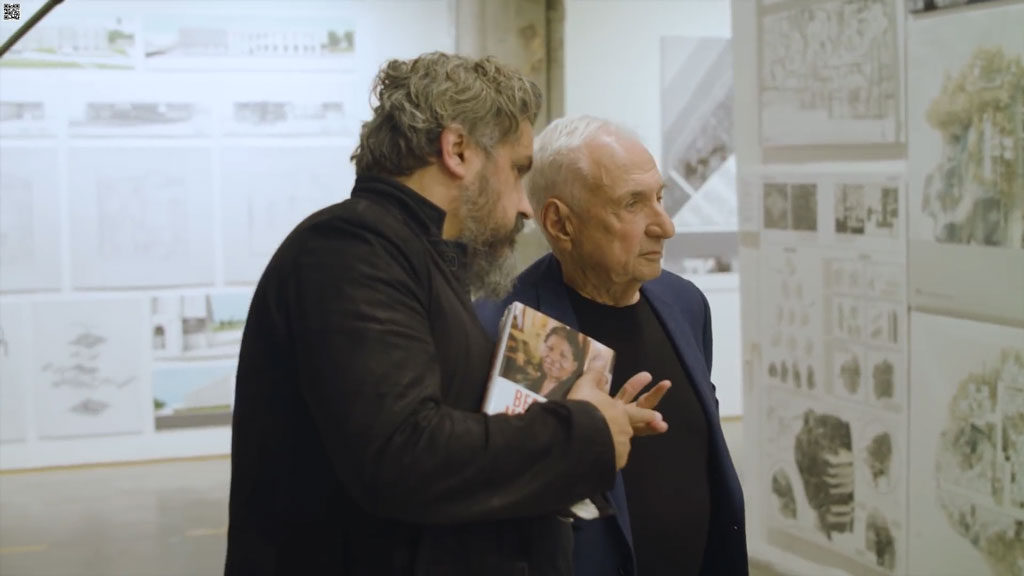
Whether or not Gehry continues to teach studio classes, the young architects in the Yale and SCI-Arc studios aren’t the only ones who’ll benefit from the Building Justice project. After the screening, Guilfoyle told the audience that several colleges around the country have started similar programs, adding, “Yale Architecture School now has a mandatory program on restorative justice and the built environment, as a direct result of this. That conversation in academia has already started.” It seems likely that as this documentary reaches a larger audience, the conversation will continue for years to come.
So, what is the future of prison design? Instead of thinking only about punishment, the students at SCI-Arc and the Yale School of Architecture envisioned prisons that meet the needs of the incarcerated population, from housing for visiting family members, to mental health centers, to private spaces that offer windows and natural light. Their models included ponds, trees, and bike paths. While no individual design seemed to offer all the solutions, their vision was clear. A criminal justice system can only succeed when it treats incarcerated people with respect and empowers them to eventually leave prison with the knowledge and support they need to make a better life for themselves.
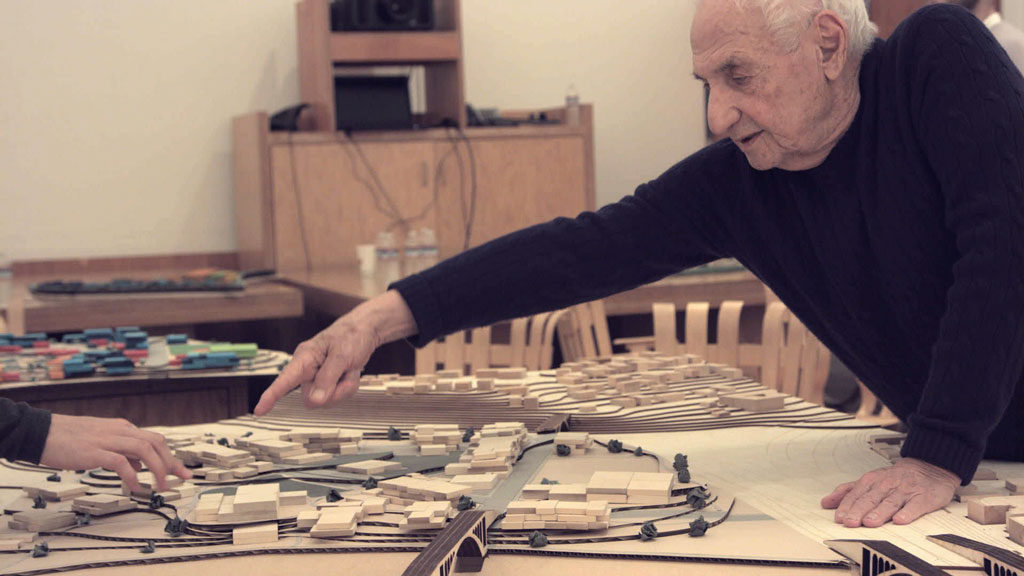
Guilfoyle sums it up this way: “You have to stop just making concrete and steel tombs and raise the bar. If the bar can be raised in every other area of architecture, if we can see better, and [have] more profoundly impactful architecture happening at all levels of society as we do… The architecture landscape in 2020 is completely different than the architectural landscape of fifty years ago, but we have to make sure that it covers every aspect of the built environment, and not just fancy houses and fancy buildings.”
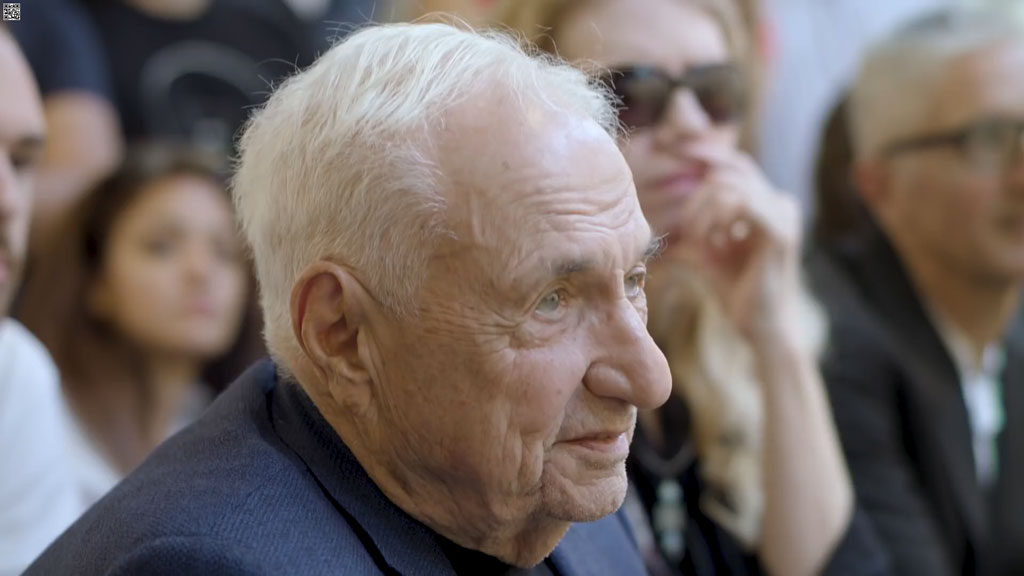
Frank Gehry: Building Justice (2018) made its Los Angeles premiere at the Architecture & Design Film Festival on March 13, 2019.
Lisa Beebe is a freelance writer based in Los Angeles. She has written about art and design for Los Angeles Magazine, LA Weekly, Playboy, KCET’s “Artbound,” and Cartwheel Art Magazine, among others.
